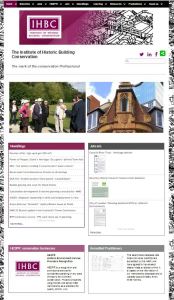Mosaics by Eduardo Paolozzi, which were the subject of a recent C20 society petition are to be transferred from London to Edinburgh for restoration, with around 5% then retained in the sculptor’s home town.
Transport for London writes:
Iconic mosaic work by one of the country’s greatest post-war sculptors will be reborn, as London Underground (LU) yesterday confirmed that a number of pieces will be transferred to the Edinburgh College of Art for restoration.
Around 95% of the mosaics at the station are being retained in their original locations as the vital Tube interchange undergoes a huge expansion to meet the needs of London’s rapidly growing population. As many of the original tiles as possible, installed in 1984, have been reused, with new tiles of the same colour, produced using the same process as the originals, commissioned to replace any damaged since they were installed at the station. The famous mosaic piece from the former Oxford Street entrance will be conserved and carefully relocated within the new station.
The remainder of the mosaics will now be carefully transported to the world-renowned art institution in Eduardo Paolozzi’s home city, where he studied in 1943 and later became a visiting professor. The University Art Collection will use the mosaics in teaching students and in conservation training, and a new undergraduate programme, Edinburgh Collections, will incorporate the Paolozzi mosaics project from the next academic year. In the next few years, the pieces will be photographed and digitally mapped, allowing experts to virtually reconstruct the art work before they are physically reassembled by students, researchers and ceramics conservators for public display.
The mosaics are an important part of the Tube’s heritage and LU has worked closely with the Paolozzi Foundation, historians and design and conservation professionals, to protect and renovate them and find a fitting home for the last pieces.
Neil Lebeter, University Art Collections curator, said: `I am delighted that we are able to provide a future for this work. The mosaics will be a very important addition to the Art Collection both in terms of Paolozzi’s significance and his links to Edinburgh. We see the murals becoming an important part of the campus; a destination in the city for students and public alike. The possibilities for creative engagement through this project are hugely exciting.’
Around 150,000 people currently use Tottenham Court Road station daily, but this is expected to rise to over 200,000 when TfL-run Crossrail serves the station in 2018. The station is currently much too small for modern demand, and is being transformed with new spacious ticket halls and entrances, eight new escalators, five new lifts and other improvements. The Tube station will be part of the same complex as a brand new Crossrail station
Public art will play a prominent part of the architecture of these new combined stations, with four major pieces compared to one now. In 2016 Paolozzi’s mosaic pieces will be joined at the Underground station by major work by Daniel Buren, widely considered to be France’s greatest living artist and one of the most significant contributors to the conceptual art movement.
Buren’s colourful pieces, which play with simple concepts, including shapes, colours and his trademark stripes, will become a major feature of both the two new entrances from Oxford Street and Charing Cross Road and also feature inside the new ticket hall.
Renowned artists Douglas Gordon and Richard Wright have also been selected to create large-scale artworks in the Crossrail part of the station. Richard Wright’s commission will see gold-leaf hand-gilded on the vast ceiling above the eastern ticket hall. The pattern, which echoes the tile patterns of historic underground stations, will appear to change, fading in and out, depending on the light and viewpoint.
Douglas Gordon’s proposal for the station’s western ticket hall in Dean Street, Soho, will look to use images to evoke the history, culture and character of Soho.
Eleanor Pinfield, Head of Art on the Underground, said: `We’re proud of the Underground’s artistic and architectural heritage, and understand our key role in preserving this as we modernise the network and expand it so that we can meet the needs of our growing city.
`We have worked hard to ensure that 95% of the mosaics are retained at the station, and now have a fitting home for the remainder, through which the pieces will have a new lease of life.
`Tottenham Court Road station is richer for the Paolozzi mosaics, and will be even more so when they are joined by important new pieces by Daniel Buren, Douglas Gordon and Richard Wright. The fact that there will be four major pieces at the station, where now there is one, underlines our commitment to the role of truly great public art on London’s transport network.’
Toby Treves, the Paolozzi Foundation, said: `Eduardo Paolozzi was one of the most important British artists of the late twentieth century, whose art captured the breadth of the modern world. His work at Tottenham Court Road station has delighted Tube passengers for over thirty years and will continue to do so far into the future. The work with Edinburgh will provide a fitting home for the pieces that could not be accommodated at the station as it is modernised. It will also serve to further promote public appreciation of the fine arts and the extraordinary contribution of Eduardo Paolozzi’.
Henrietta Billings, Senior Conservation Adviser, Twentieth Century Society said: `It is great to see these Paolozzi mosaics given a new lease of life by the University of Edinburgh. We are very pleased that they will once again be on public display and re-erected as a major conservation project and celebration of Paolozzi’s work in Edinburgh. The processes developed will also inform the future conservation of other works of post war public art, many of which remain at risk.’
View the TfL press release
View information on the C20 campaign
IHBC newsblogs on public art


